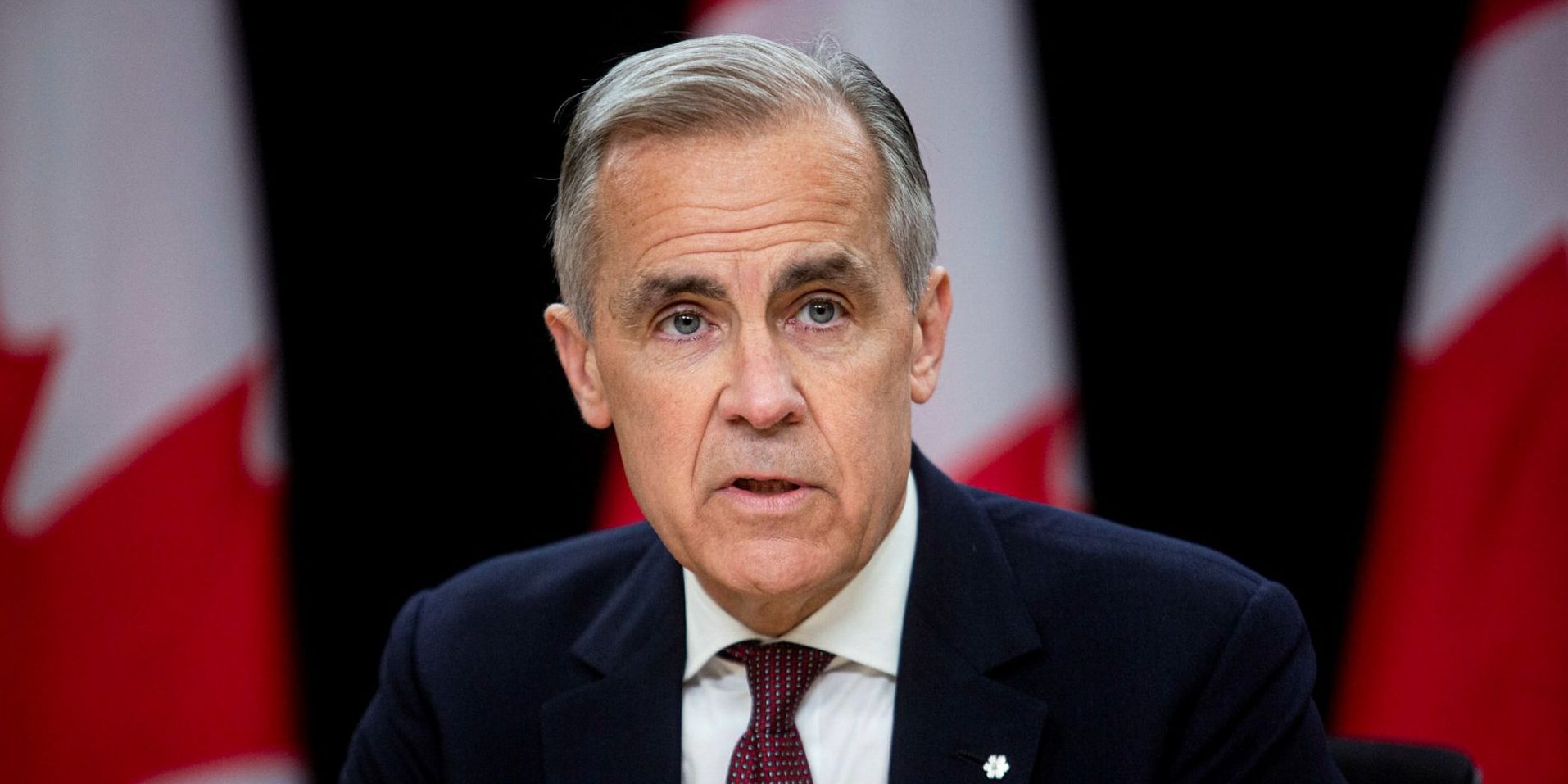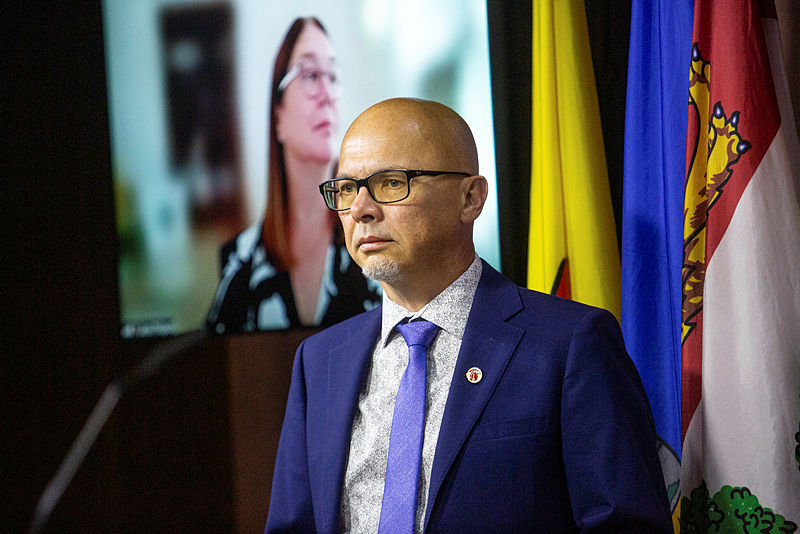Health sector looks to pharmacare and more to help address financial hit of U.S. trade war

A trade war with the United States has the potential to drive up the costs associated with medications and medical equipment, and health-care sector representatives are looking to the recently elected Liberal minority government to take action, with finalizing national pharmacare as one possible option to reduce costs for Canadians.
“We are looking for what could be risks to our public health-care system in these negotiations [with the U.S.], whether it be through tariffs preventing us from getting medical equipment imported, driving up the cost of medical equipment and other supplies, [or] whether it could be about access to pharmaceuticals. There could be a whole host of areas that could be impacting health care in these negotiations,” said Steven Staples, national director of policy and advocacy for the Canadian Health Coalition. “[The U.S. is] a major supplier of drugs and supplies, and the tariff regime is increasing costs on all kinds of goods. Health care won’t be exempt from that.”
About 16 per cent of Canada’s drug supply is imported from the U.S., and the inclusion of medications and pharmaceutical ingredients in Canada’s counter-tariffs could pose a risk to patient care and affordability, according to the Canadian Medical Association (CMA) in an April 16 press statement. The CMA also reported that almost 90 per cent of physicians say they are worried about how changes to cross-border trade will affect their patients, according to a survey conducted by the organization between Feb. 10 and 13.
Staples told The Hill Times that he is “cautiously optimistic” about Prime Minister Mark Carney (Nepean, Ont.) and his administration in its early days. The Liberals are—for the most part—moving forward on the agenda laid out by the previous Trudeau government, such as by continuing commitments towards pharmacare and dental care, according to Staples.
In Carney’s first post-election press conference on May 2, he made a commitment to “protect the programs that save families thousands of dollars per year, including pharmacare.”
In a May 1 post on X, Carney announced an expansion of the Canadian Dental Care Plan, allowing Canadians aged 55 to 64 to apply, and that in the coming weeks applications would be open to Canadians aged 18 to 54.
Staples argued that during an economic downturn, the need will increase for a national pharmacare program intended to help manage the cost of prescription drugs.
The Pharmacare Act came into force after receiving royal assent on Oct. 10, 2024. Prior to the campaign period leading up to the April 28 federal election, Ottawa secured agreements with four jurisdictions: British Columbia, Manitoba, the Yukon, and Prince Edward Island. The next federal health minister will need to negotiate agreements with all the remaining provinces and territories to determine how a national pharmacare plan will be implemented.

“This directly connects with the economic precarity and the layoffs that we’re seeing right now, and we think it’s essential that pharmacare be rolled out with new provinces and territories as soon as possible, especially for all these workers that are going to be losing private benefits,” said Staples. The Carney government will “play an essential role, particularly the health minister. [Former health minister] Mark Holland did a great job at negotiating those deals. He championed the program. He really did the work to go to the provinces to get them to sign on, and we hope that the next minister will share the same enthusiasm and commitment to rolling that program out, and not let it just die on the vine.”
Critics of a universal, single-payer model for a pharmacare system in Canada include Innovative Medicines Canada (IMC). On Nov. 15, 2024, IMC argued in a press release that a “one-size-fits-all approach” to pharmacare could limit Canadians’ ability to access new, cutting-edge drugs, or even lose access to more comprehensive treatment options.
Liam MacDonald, director of policy and government relations with the Canadian Chamber of Commerce, argued in a Feb. 12 op-ed in The Hill Times that all provinces already have public drug plans for most people not covered by private plans, and that some have already achieved universal coverage through this public-private mix.
“Replacing existing provincial and private insurance would come at a massive cost to taxpayers, and would leave many with access to fewer drugs. Even the most expansive provincial public drug plan covers only about half of what is available on a typical private drug plan,” MacDonald wrote in the op-ed, adding that the priority should instead be to find ways to address slow drug-approval timelines.
Michelle McLean, president and CEO of HealthCareCAN, called the current trade uncertainty between Canada and the U.S. “a very concerning development that affects Canada’s health-care system,” in a statement emailed to The Hill Times on May 9.
Medical supplies, laboratory equipment and infrastructure, devices, and medications should be exempted from any trade sanctions, McLean said, adding that HealthCareCAN will be working closely with member organizations to emphasize to policymakers the importance of protecting Canadian health care from trade-related disruptions.

“As this situation continues to evolve, it will be very important that Canada develops a cohesive and co-ordinated response to protect the health-care system. While that is true concerning the health-care supply chain, such an approach is also vital to bringing about the type of concrete action required to shore up health care and health research across the country,” said McLean.
McLean’s statement said HealthCareCAN is collaborating with its members on a national approach to make Canada a destination for health-care professionals, researchers, and personnel, which includes repatriating Canadian workers and researchers.
“We are very eager to work with the new federal government to find ways to support this effort as well as collaborating to implement policy ideas put forward during the recent election to strengthen the health-care system and ensure Canada is a world-leader in health research,” said McLean in the statement.
Linda Silas, president of the Canadian Federation of Nurses Unions (CFNU), told The Hill Times that the current tariff war with the U.S. is giving her flashbacks to the days of the COVID-19 pandemic, which resulted in higher costs and shortages of items such as personal protective equipment.
To help the health-care sector, Canada needs a patient safety guarantee from the federal government, Silas said. The CFNU is advocating for a Patient Bill of Rights, or a legal tool intended to address unsafe working conditions, and to ensure everyone has access to needed care.

“What we’re asking [of the federal government] is to have this patient guarantee that would connect to the dollars that they send to the provinces and territories. Within that patient guarantee it would say you must guarantee patients you will have the appropriate nurse-patient ratio, that health-care workers will not be working more than 13 hours due to safety issues, and that long-term care will be properly funded and taken care of,” said Silas. “What we want to remind the prime minister … is that our public health-care system is a security blanket that not only people living in Canada hold dear, but it’s also a financial benefit to any company opening or working in Canada, and we just need to keep it stable and strong. It has to become a higher priority.”
Ian Culbert, executive director at the Canadian Public Health Association, told The Hill Times that his organization is looking at the possible determinants to health as a result of instability from the current trade war.

“Uncertainty is a huge driver of anxiety,” said Culbert. “Overall, when you look at the impact the tariffs are having already directly on workers, that threat to their livelihood is real, [and] that causes high levels of stress and is a significant predictor of poor health moving forward.”
Culbert argued that health care didn’t emerge as a priority during the recent federal election, and that he wants to see the federal government play a leadership role “in strengthening public health systems across the country.”
“I’m not referring to publicly funded health-care systems, but rather those systems that keep people healthy—that make sure the air we breathe is clean, the food that we eat is safe and we have clean drinking water, among the multitude of things that public health professionals do across the country to keep people healthy,” he said. “We have a great deal of interest in public health during the emergency, and then it disappears afterwards, and then we’re shocked when we’re not prepared for the next public health emergency.”
“With the evolution of [avian influenza] H5N1 … and the decimation of public health systems in the United States under the [Donald] Trump government, we should be doubling down on our investments in all of the systems that protect the health and well-being of Canadians,” Culbert added.
jcnockaert@hilltimes.com
The Hill Times
Canada prescription drugs statistics
- For many Canadians, prescription medications are essential in the management of many health issues and chronic conditions. In 2021, more than two-thirds (67 per cent) of Canadians reported taking or being prescribed medication in the last 12 months.
- Medication use tended to vary in the same way as provincial patterns in prescription coverage. The three provinces with the highest percentages of residents without prescription insurance coverage—British Columbia, Prince Edward Island, and Ontario—were also the provinces with the lowest percentages of medication use (63 per cent to 67 per cent, compared with the highest percentages of 75 per cent for Newfoundland and Labrador, and 73 per cent for New Brunswick).
- According to the 2021 Survey on Access to Health Care and Pharmaceuticals During the Pandemic, just over one in five (21 per cent) Canadians reported not having insurance to cover any of the cost of prescription medication in the past 12 months.
- The proportion of the population without prescription insurance coverage was similar for men (21 per cent) and women (20 per cent), and across age groups up to 64 years. For adults aged 65 years and over, a higher percentage (25 per cent) reported not having prescription insurance compared to adults aged 25 to 64 years (18 per cent).
- Overall, the share of Canadians reporting no prescription coverage varied considerably across the provinces, ranging from a high of 26 per cent in B.C. to a low of 14 per cent in Nova Scotia.
- The situation for seniors was similar; the highest percentages reporting no prescription coverage were among seniors living in B.C. (33 per cent) and Manitoba (33 per cent), and lowest among seniors in Alberta (nine per cent) and Nova Scotia (11 per cent).
—Source: Statistics Canada data released on Dec. 5, 2022






 LICENSING
LICENSING PODCAST
PODCAST ALERTS
ALERTS













